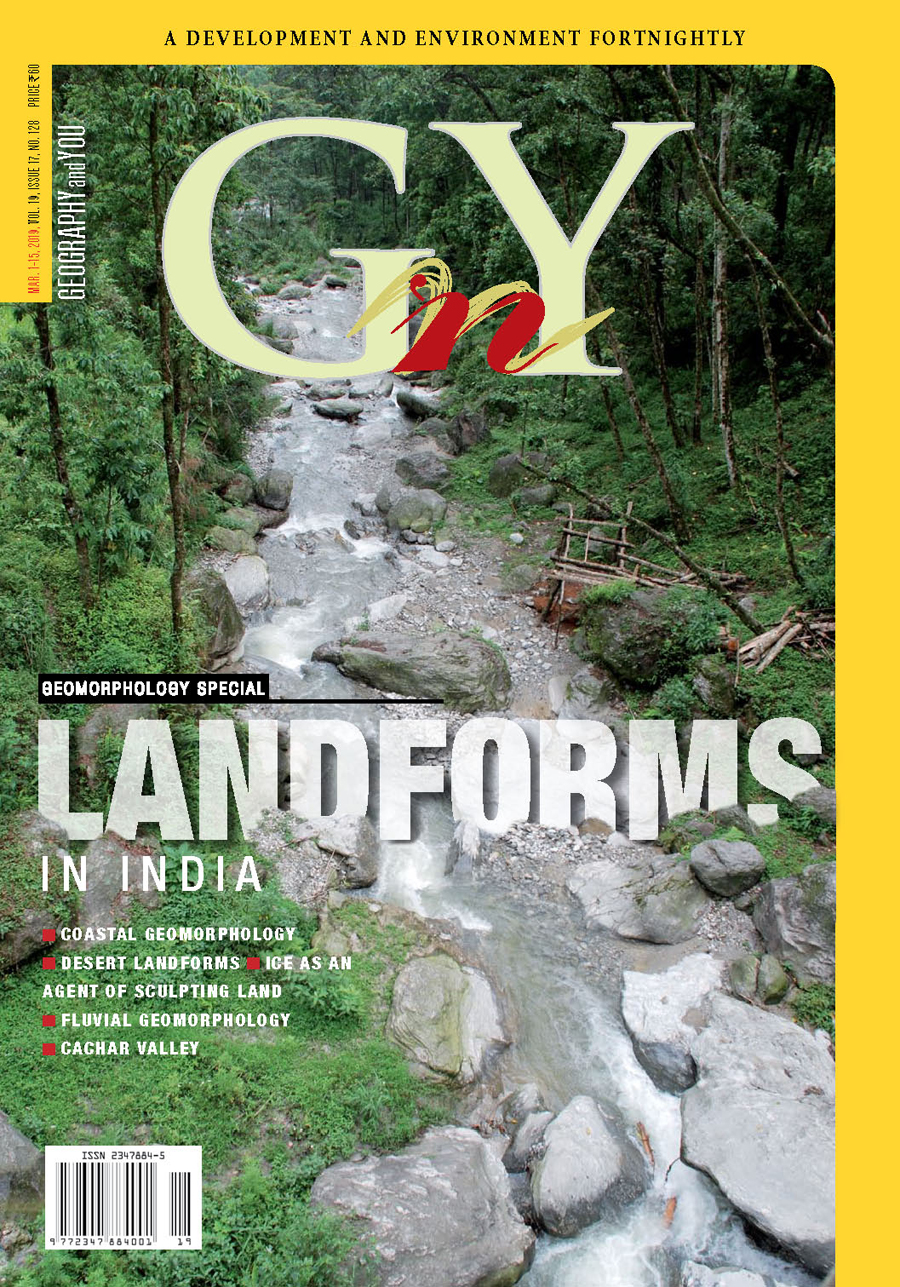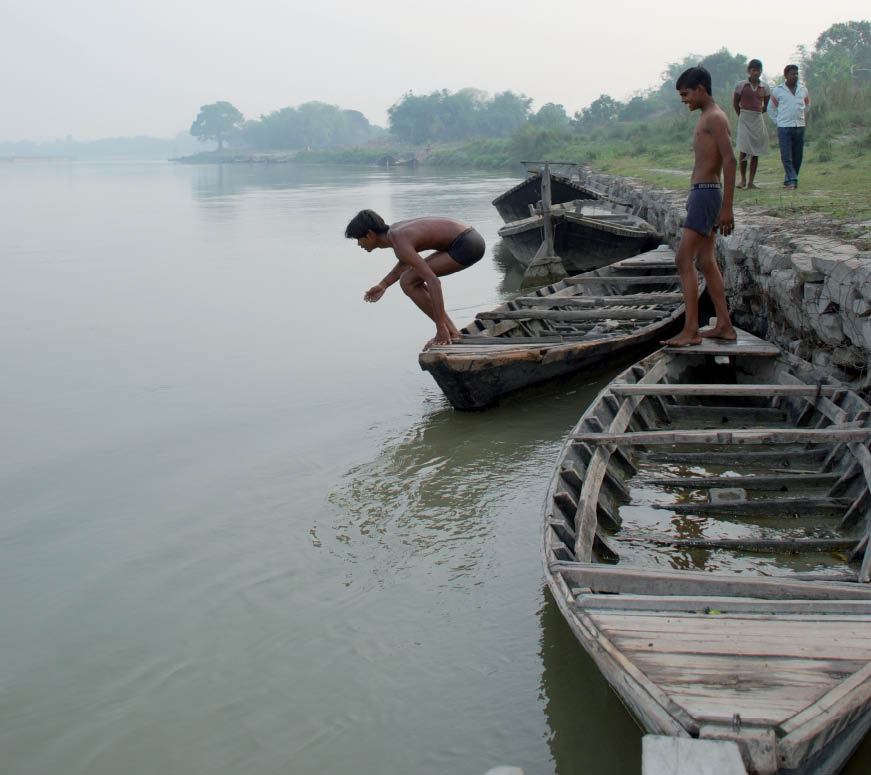
Expert Panel

Former Chairperson, National Biodiversity Authority, Chennai.

Air Vice Marshal (Retd) Former DG, India Meteorological Department (IMD), New Delhi

Geologist and Secretary General, 36 IGC, New Delhi.

Former Professor, CSRD, Jawaharlal Nehru University, New Delhi.

Former Vice Chancellor, MG Kashi Vidyapeeth, Varanasi

Former Member Secretary, Central Pollution Control Board, New Delhi.

Former Professor, Jawaharlal Nehru University, New Delhi

Chief Executive, ACRA, Noida, Uttar Pradesh.
Inside this issue
Landforms in India
Rivers are a life-sustaining resource for plants, animals and humans. During its arduous journey rivers carve out several erosional and depositional features that define the geomorphology of a river basin.
The Cachar Valley is a small, narrow sub basin of the Barak river. This area is subjected to continuous tectonic activity, morphological changes and flooding. Human activities have aggravated the situation.
Narmada offers an excellent example of geological control over river morphology where the waters follow a course of least resistance.
Lonar crater is one of India’s spectacular landforms that is a well known example of a best preserved meteorite impact structure on the volcanic rocks of the Buldhana district of Maharashtra.
Deserts are diverse in nature and found on almost all latitudes. Landforms in desert have evolved through long periods of time and have been created by erosional and depositional processes of the present as well as the past climatic domains.
Coastal landforms constitute erosional or depositional features. Sea cliff, sea caves, sea arches etc., are erosional landforms whereas landforms such as beach, bar, barrier are depositional in nature.
The glaciers have sculpted various landforms transforming the geomorphology of earth. These landforms are the result of processes of weathering, erosion and deposition under harsh climatic regimes.
ARCTIC-ANTARCTIC
Remote sensing is a space-based satellite technique preferred for its repetitive coverage of inaccessible and rugged terrain for surface characterisation. This paper showcases climate change in the vulnerable polar realms by adapting different algorithms to the satellite technology to infer surface signatures.
In brief
Hexagonal structures of basaltic rocks comprises columns and are separated by vertical or horizontal fractures. The article should be cited as GnY staff, 2019. Columnar basalt, Geography and You, 19(17): 17
The labyrinthian caves within the Meghalaya plateau present a fine example of a karst landform.
With 36 low lying coralline islands, the Lakshadweep presents a unique landform that barely rises 2 m above the sea level.
Badlands are a dense system of interconnected gullies and ridges. The Indo-Gangetic plains offer one of the best examples of such an area.
Located in the Andaman and Nicobar, Barren island is the only active volcano in India.
Adam’s Bridge or the Ram Setu is an interesting geological formation that holds mythical significance for the subcontinent.
High temperatures beneath the earth surface heat up water in aquifers which emerge as hot springs.
Excessive withdrawal of groundwater leads to reduced water pressure in aquifers resulting in reduced support of the overlying unconsolidated clay or silt.
I am delighted to bring before you the first ever G’nY issue on geomorphology showcasing India’s myriad landforms. I had often wondered as a young student of geography why we so often quoted examples of faraway lands when describing fantastic landforms that were so painstakingly shaped over mill
The earth is a unique planet—the only one known to sustain life. Enveloped by mighty oceans, clothed by soil, lofty mountains and dense forests, fed by rivers and nourished by rains–it has been held in awe and even worshiped over centuries. The natural wonders of the earth are sculpted by nature

